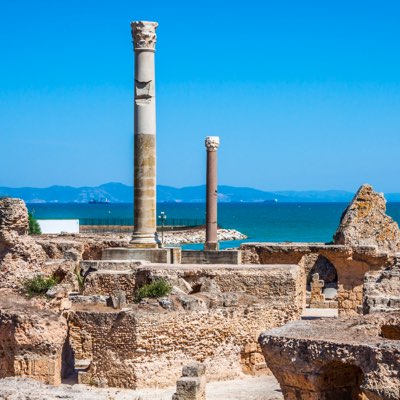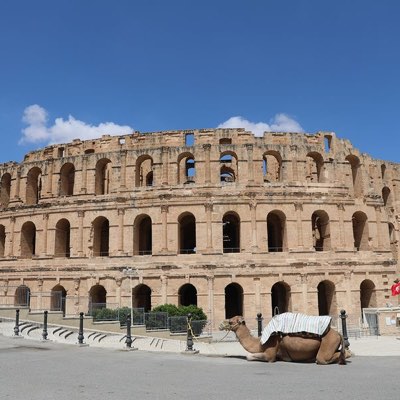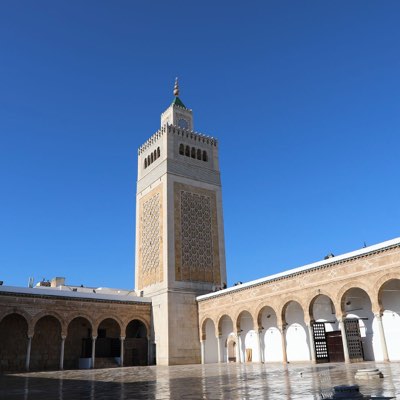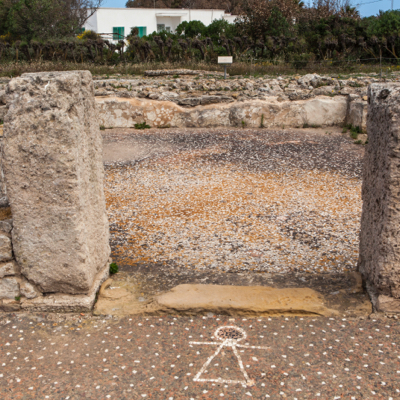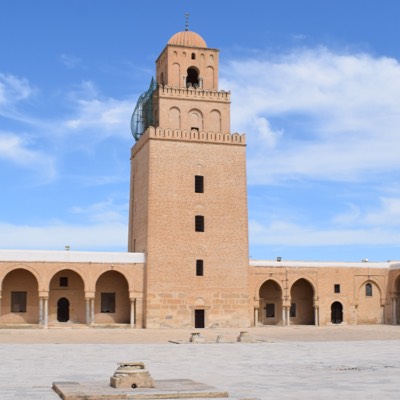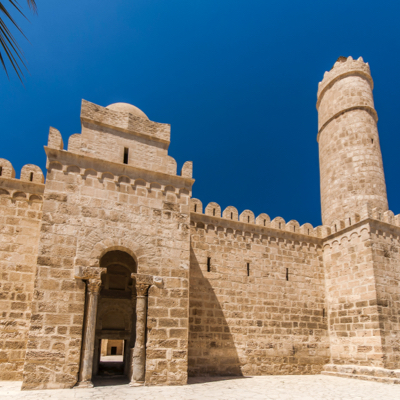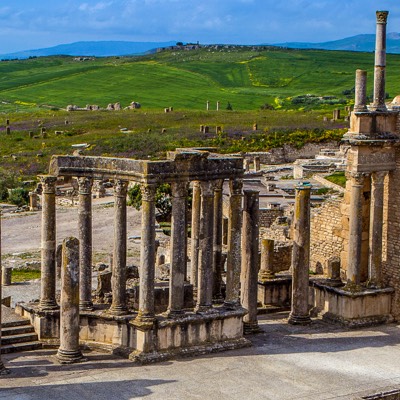Tunisia
Discover Tunisia
Tunisia’s History
Bordered by the Mediterranean Sea from the north and east, Tunisia has a rich history that extends over 3,000 years and in which several civilizations have succeeded one another to constitute a composite heritage that is highly representative of Tunisian culture. The Punic, Roman, Byzantine, Arab and Ottoman civilizations have made their mark on the habits and customs of the autochthonous Berber population, which has been subjected to major transformations throughout history.
World Heritage in Tunisia
Tunisia has always been marked by the different civilizations that have succeeded one another on its territory. It is a country distinguished by its rich historical and authentic cultural heritage. 7 Tunisian archaeological cultural sites are classified as World Heritage by UNESCO including :
Intangible
Cultural heritage in Tunisia
Intangible Heritage includes traditions or expressions inherited from our ancestors such as performing arts or know-how. In 2022, Tunisia has five elements registered as intangible cultural heritage on the representative list.
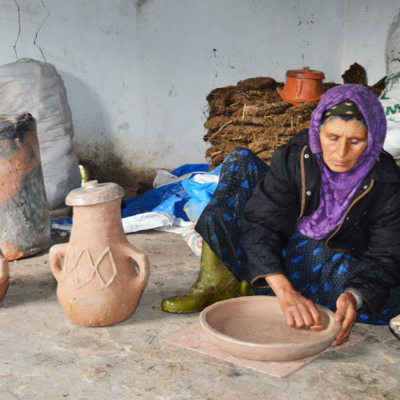
pottery (2018)

with the date palm (2019)
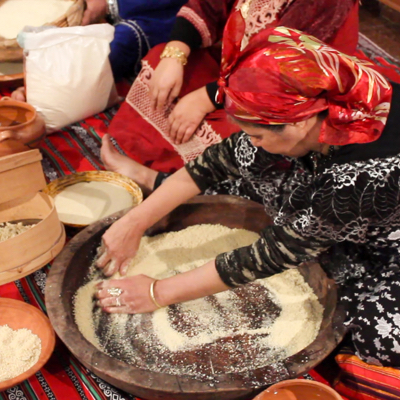
related to the production
and consumption of couscous (2020)
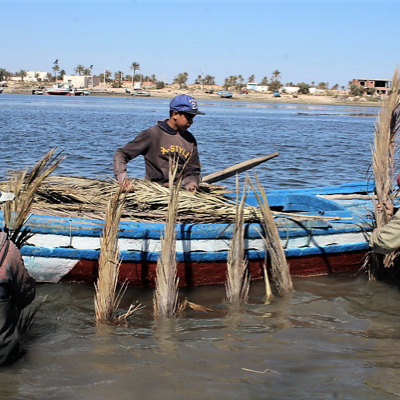

Tourism
Sahara - The magic of light
The magic of light, bracing air, landscapes that stretch out to infinity and the bare purity of the desert… The call of the Sahara rings out louder as modern life becomes more restrictive and oppressive. The Tunisian Sahara encourages contemplation whether you’re staying in a luxury hotel, a well-equipped campsite or a tent right in the heart of the desert. It comes to life in a 4x4, speeding over rocky roads, or on the back of a camel. It can also offer adrenaline junkies the speed and thrills of extreme sports.
Its originality and diversity are as impressive as its facilities. The Tunisian Sahara is the perfect venue for some out-of-the- ordinary experiences.



On the beach - White sand and blue skies
With its fantastic coastline, 1,250 kilometres of fine sandy beaches and its string of idyllic islands, Tunisia is one of the best-known Mediterranean destinations for seaside holidays. From Nabeul to Mahdia, from Tabarka to Djerba, hotels with lush green gardens jostle for space along the coast. The sea stretches out like a magnificent blue mirror; children play in the water, the multi-coloured domes of parasail wings rise up into the sky, windsurfers crisscross over the water, jet skis buzz along the shoreline…
The wide range of hotels, resorts, activities and leisure options guarantee a fun-packed holiday. Less well known are some of Tunisia’s romantic beaches, well-kept secrets off the beaten path, studded with unusually shaped rocks, or lined with palm trees and golden and dunes.



Wellbeing : The Tunisian touch
Tunisia is a fantastic destination when it comes to wellbeing. The country is renowned for its hospitality, with its Mediterranean climate and the sweet smell of jasmine and orange blossom, and wellbeing has deep roots in Tunisia’s traditions. Water has always been a source of natural beauty and health, from Roman thermal baths to Turkish hammams. Tunisia is now the second biggest country in the world when it comes to thalassotherapy, boasting some sixty dedicated centers along its coastline.
From the north of Tunisia to the south, many hotels have a wellbeing center offering a wide range of massages, wraps and beauty treatments. Some have actual thalasso centers or luxury spas; whether you’re looking for an à la carte treatment or a comprehensive package, you can enjoy the benefits of seawater and seaweed, packed with mineral salts and trace elements. And if you prefer thermal springs, there are treatment centers in the North West and in Djerba



The flavours of Tunisia : Sunshine on a plate
Olive oil, fresh or grilled vegetables, fish and seafood, served with cereals, herbs and spices… Tunisian cuisine is first and foremost based on typical Mediterranean flavours that are both light and delicious. The oldest and best-known Berber dish is couscous, but even that doesn’t veer too far away from this rule: whether it’s served with fish or lamb, it always comes with plenty of vegetables.
If you like your wine, you might be interested to know that Tunisian dishes are served with some excellent Tunisian wines. For your mezza or starter, you can try a “kemia”, a diverse selection of nibbles ranging from seafood with almonds and pistachios to fava beans with “torchi” (slivers of turnip flavoured with harissa).



Activities in Tunisia : Keep on moving
The countless resorts and holiday clubs that are dotted along the Tunisian coastline offer a wide range of fun and sporting activities. When it’s all-inclusive, you can spend your days honing your tennis skills or having a go on a catamaran in the sunshine. Another option is golf, with ten courses offering fantastic choice of beautiful landscapes spread across the different resorts.
Around Tunis and in the big resorts, there are plenty of lounge bars, casinos and trendy clubs to choose from if you fancy going out. From Tabarka and Bizerte on the north coast, to the Gulf of Gabes in the south, amateur sailors can access around thirty different ports and moorings and there are seven marinas with cutting edge facilities.
The variety of landscapes, forests and mountains in the north and the Sahara desert are fantastic locations for some amazing walks, horse rides and motorbike adventures. Tunisia’s marine life is exceptional, and there are diving centers in most resorts. Last but not least, hunting fans can find expert guides to show them round the expanses of wilderness.



Arts and crafts : Handmade treasures
Tunisia has built up centuries of craftsmanship. Since time immemorial, potters have been turning enormous vases and women have been weaving carpets with geometric patterns. Ceremonial outfits covered in embroidery, palaces decorated with sculpted plaster and multi-colored earthenware bear witness to influences from around the world, from Andalusia and Italy to Turkey. From one region to the next, from one workshop to the next, you can marvel at the inventiveness, skill and rich heritage of Tunisia’s craftsmen and women.



Incentives & conferences : Small country, big events
Olive oil, fresh or grilled vegetables, fish and seafood, served with cereals, herbs and spices… Tunisian cuisine is first and foremost based on typical Mediterranean flavours that are both light and delicious. The oldest and best-known Berber dish is couscous, but even that doesn’t veer too far away from this rule: whether it’s served with fish or lamb, it always comes with plenty of vegetables.
If you like your wine, you might be interested to know that Tunisian dishes are served with some excellent Tunisian wines. For your mezza or starter, you can try a “kemia”, a diverse selection of nibbles ranging from seafood with almonds and pistachios to fava beans with “torchi” (slivers of turnip flavoured with harissa).



To visit
Medina of Tunis
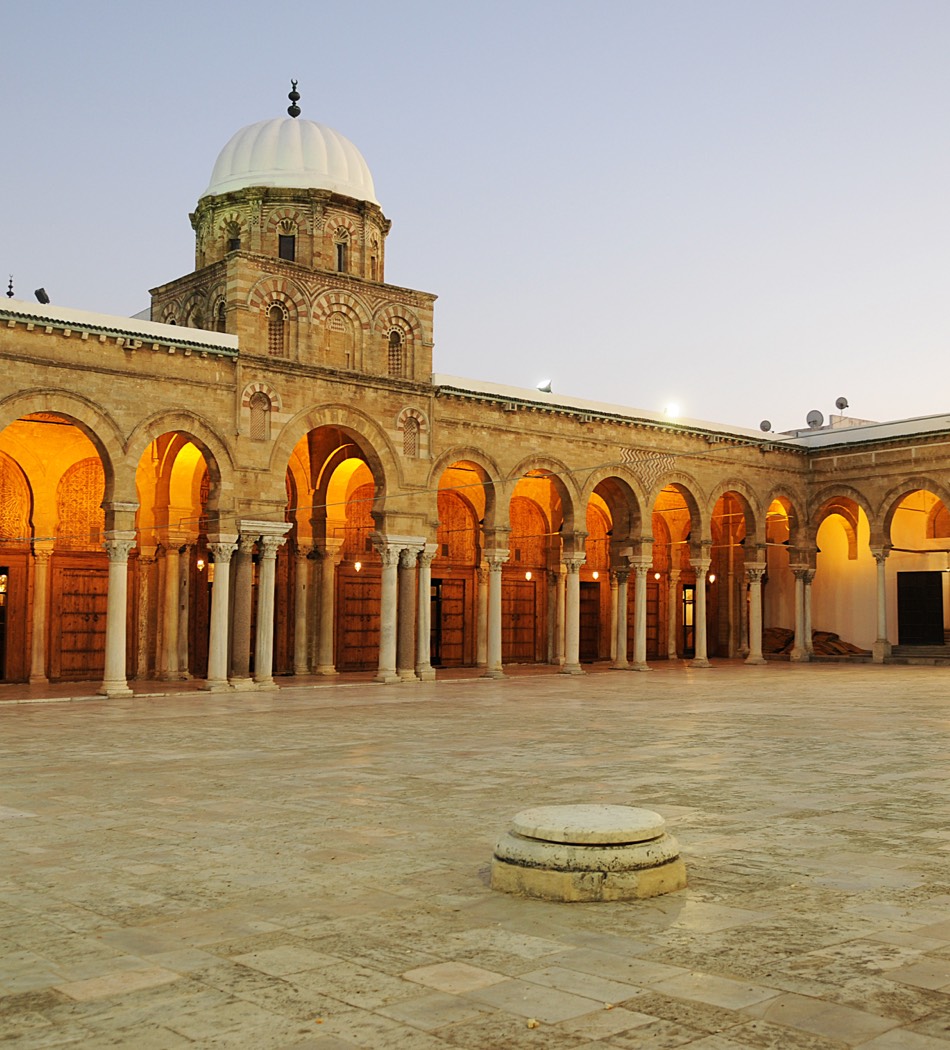
The Medina of Tunis is the medina quarter of Tunis, the capital of Tunisia. It has been a UNESCO World Heritage Site since 1979. The medina is exceptionally well preserved. The souks, covered with arches let in a dim light, teeming, bustling, and overflowing with all sorts of merchandise: fabrics of a thousand colors, perfumes or precious jewels. The contrast with the peaceful neighboring alleys is striking. White walls and blue ironwork, vaulted passageways, domes with green tiles, yellow doors framed with delicate patterns in carved stone.
In the medina, admire the Great Mosque Zitouna, from the 9th century, and the Turkish mosques decorated with marble. Visit the Tourbet el-Bey monument, which shelters the tombs of the Bey family, the elegant madrasahs from the 18th century, the palaces richly decorated with ceramic tiles and arabesques of carved plaster. Observe also the central souks, covered streets reserved for trade and crafts : jewellery, traditional embroidered dress and chéchia, the traditional red felt hats typical to Tunisia.
In the souks of the medina, you will find delicious snacks for when you are peckish: the famous golden and crispy “brik a l’œuf”, the small fricassé sandwich, a plate of kaftaji (summer vegetables with egg, crushed and fried) or a bowl of lablabi (spicy chickpea soup). When taking a seat in a former palace or fondouk (caravansary) converted into a restaurant, you will taste the best of Tunisian gastronomy: couscous with grouper, quince and rosebuds;
the stuffed vegetable dish fondouk el ghalla; marqa h’loua the sweet and savory lamb stew simmered with prunes and almonds… For dessert, try the pistachio cream bouza or the pastries perfumed with rosewater.
The city center of Tunis
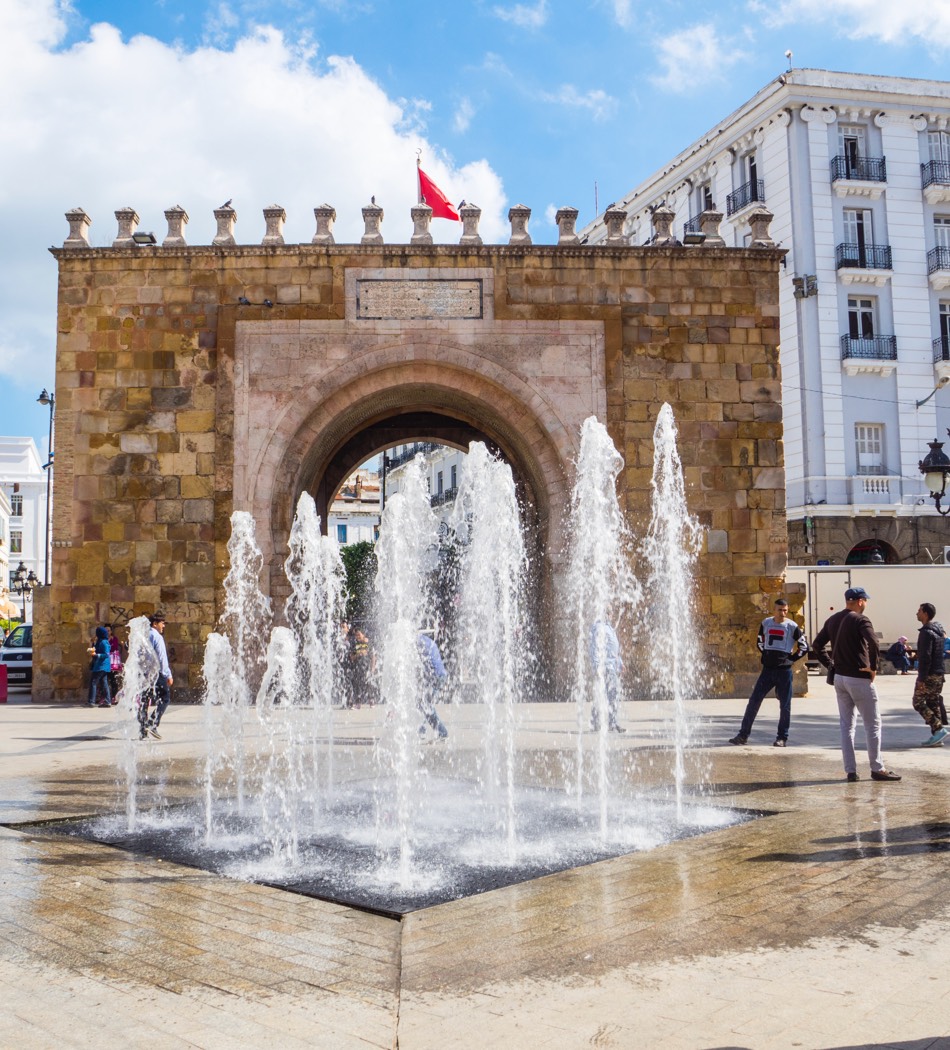
In the city center of Tunis, the neighborhoods surrounding Bourguiba Avenue have their own special charm. At the foot of the buildings in the Art Nouveau or Art Deco style, a lively crowd squeezes into popular cafes, fashion boutiques, tramways and the rows of palm and fig trees. Visit the Central Market overflowing with groceries. Drink a soda on a terrace admiring the carved façade of the Municipal Theatre, inaugurated in 1902, and the statue of Ibn Khaldoun, the great thinker born in Tunis in the 14th century. In the city center and its modern quarters there is several shopping centers where major international brands rub shoulders with designer boutiques and artisanal creations.
Bardo National Museum
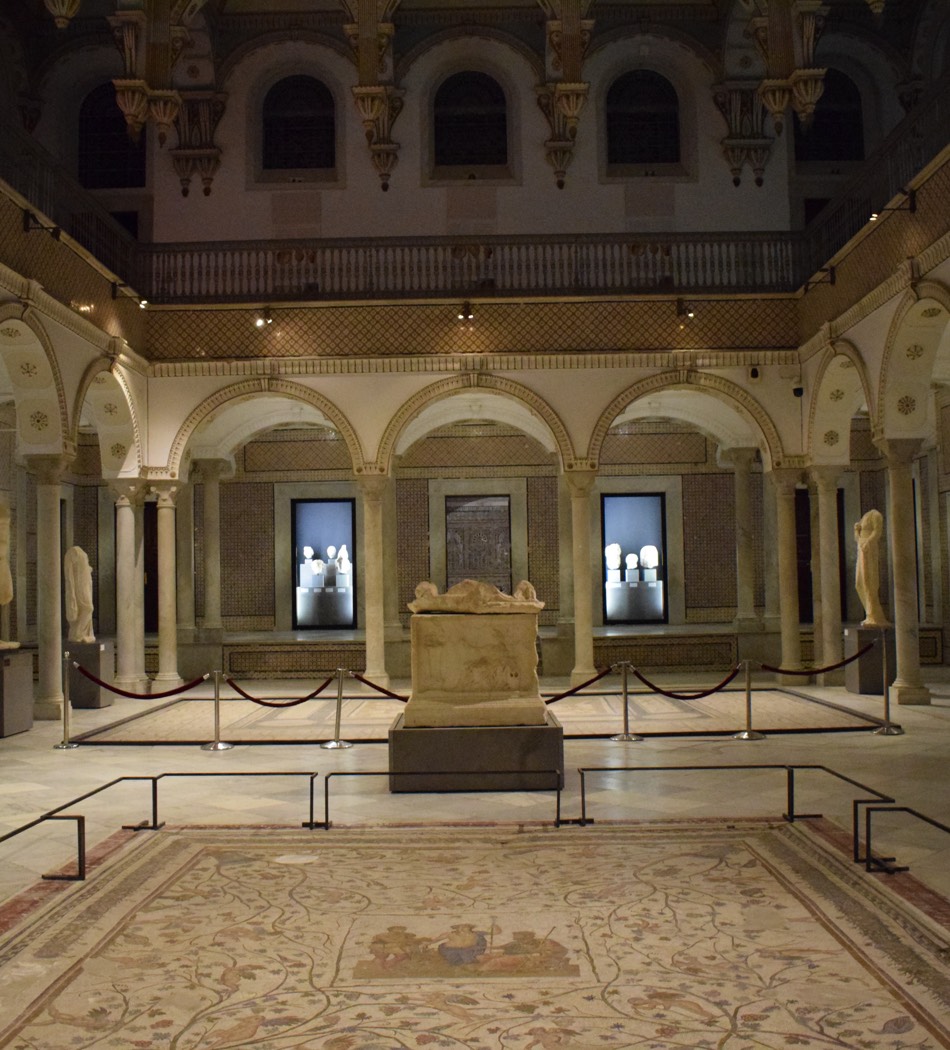
The fabulous exhibition of mosaics in the world is located in Tunis, in the former palace of the Beys, the Bardo, completely renovated and extended in 2012. This museum possesses a unique collection of Roman artifacts to which have been added artifacts from across Tunisia’s history, from ancient Carthage to the Ottoman era. In the entrance, in a well of
light, let yourself be entranced by the immense mosaic displaying mythological scenes around the god Neptune’s chariot. Then contemplate the strange goddesses of Carthage, the Hellenistic works of art drawn up off the coast of Mahdia, the marble statues which adorned the Roman temples. You will also discover the Jewish heritage of Tunisia and the mysterious stone slabs showing Numidian deities. The Islamic art of Tunisia has pride of place: astrolabes, precious manuscripts, ceramic goblets, without forgetting the rich decoration of the palace itself. But above all, you will not get bored exploring one by one the countless masterpieces of the Tunisian mosaic artists, which were famous throughout the Roman world. Realistic, full of life and finely nuanced, these scenes tell of the adventures of Ulysses and of work in the fields, the amphitheater games and the gods of Olympus… a fascinating journey through time.
Archeological site of Carthage
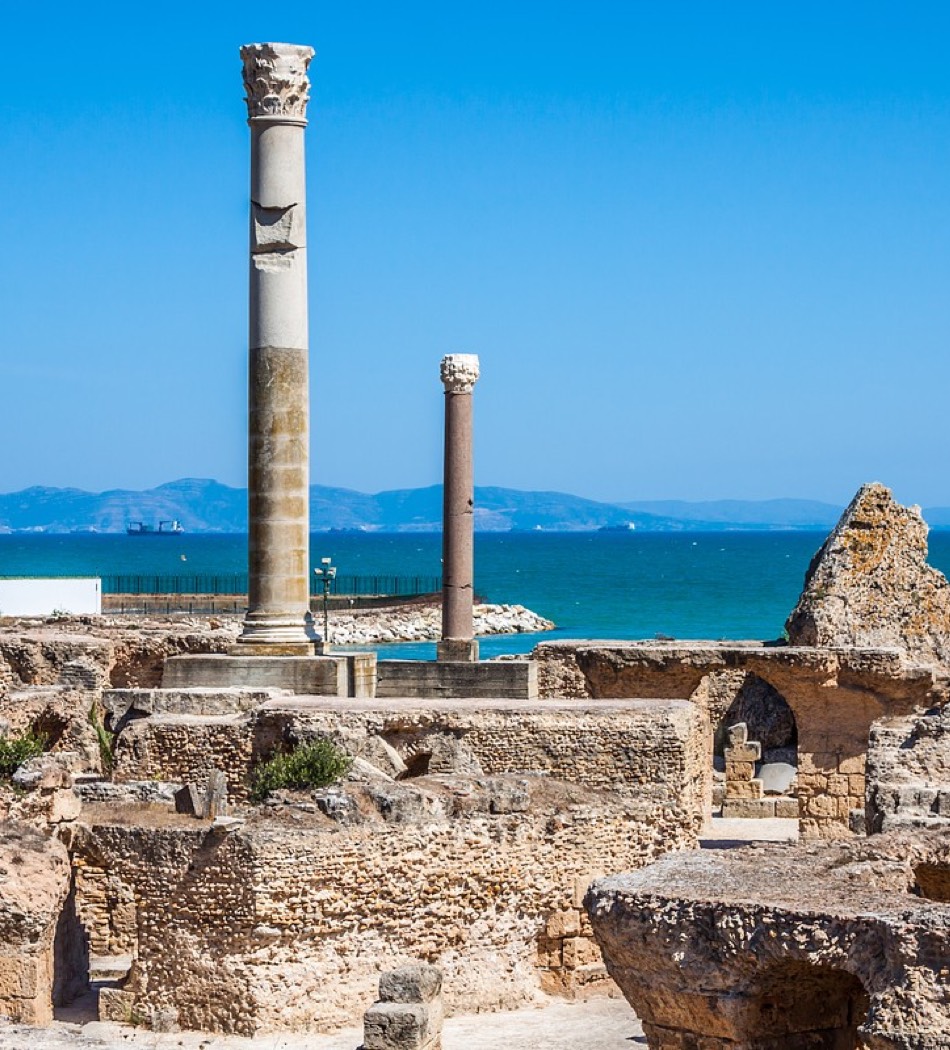
Carthage is built on what is certainly one of the most beautiful sites of the Mediterranean. Even today, visitors are fascinated by the bay with its turquoise reflections, the white houses surrounded by cypress trees, and the distant silhouette of Mount Boukornine standing out against the mist. Discover fragments of history by accident in the streets of modern Carthage: the remains of the basilica of Saint Cyprien overlooking the sea, the Carthaginian houses of the Magon quarter, the Punic ports where a striking serenity reigns...
The site of Carthage is designated a UNESCO World Heritage Site and is worth a long visit. The accumulation of ruins across a vast zone allows the ancient city to come alive in the imagination: water reservoirs with a capacity of 60 million litres, gigantic Roman baths, an elegant way of life. In the archaeological museum, visitors can discover the art and religious rituals of Punic Carthage.
The village of Sidi Bou Saïd
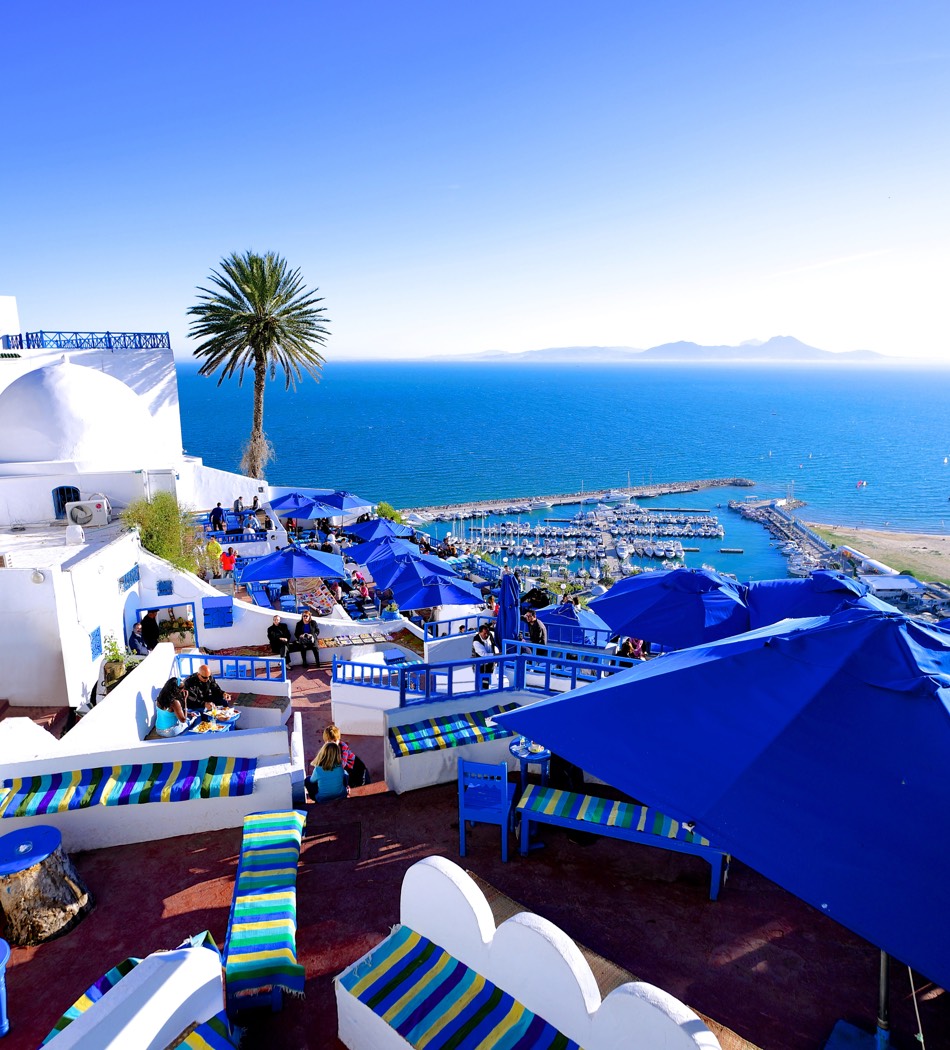
Sidi Bou Saïd is an elegant village next to Carthage where the blue and white houses jostle with each other on the hillside, facing the sea.
In Sidi Bou Said, the doors are the smiling face of the houses. Painted in bright blue
or
yellow, arched or rectangular, framed with carved stone, ceramic tiles or black and
white
marble… each has its own style. The most beautiful are decorated with large black studs
expertly arranged into stars, flowers, or the shapes of cypress trees or fish. On your
strolls,
don’t hesitate to go off the beaten track and explore the alleyways: with each step, a
new
door will surprise you. Sidi Bou Said was once a favorite holiday destination for the
privileged
families of Tunis. Close to the sea, they lived out their elegant way of life under the
protection of the tomb of Sidi Abou Said, a saint from the 13th century. Behind the
walls
simply whitewashed with lime sometimes veritable palaces are concealed. One of them was
built by a European who fell in love with the village in 1912, the baron Rodolphe
d’Erlanger;
transformed into a museum, in the present day it hosts concerts. Other houses have
become
art galleries or guesthouses.
When visiting Sidi Bou Said, treat yourself to a bambalouni, a large warm doughnut in
the
shame of a ring, then drink a mint and pine nut tea in the famous Cafe des Nattes.
Contemplate the stunning seascape from the Sidi Chabaane cafe, the lighthouse or the old cemetery. Several artists have chosen to live in this inspiring village.
Archaeological site of Oudhna
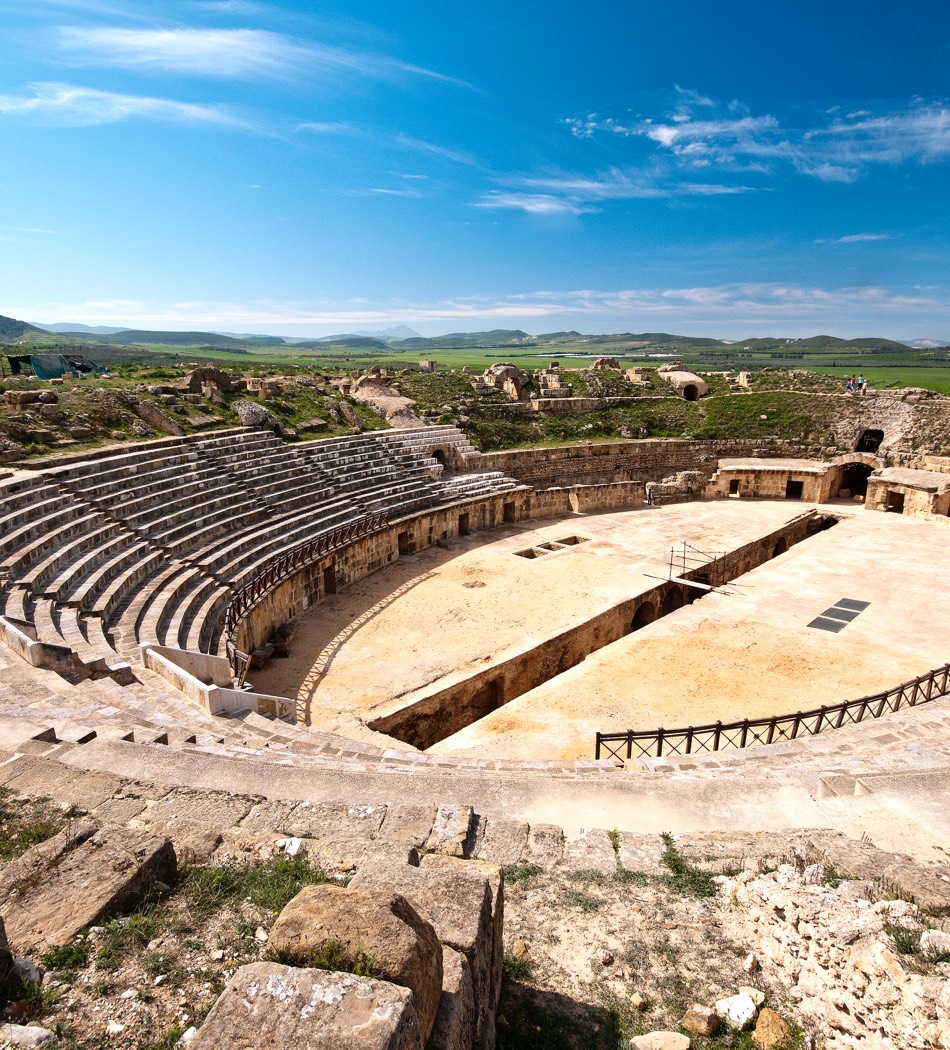
The archaeological site of Oudhna is located 30 kilometers south-west of Tunis, in the valley of Oued Miliane, known since Antiquity for its fertile soil. Human occupation of the region dates back to pre- Roman times, but the foundation of the town took place at the end of the first century B.C. when a new colony was created, inhabited by veterans of the 13thRoman legion. This colony, which was named Uthina, reached its peak during the second century AD, especially under Emperor Hadrian. In medieval times, the new occupants of the site did not create a new town and merely exploited the existing ancient monuments. This period turned over large quantities of Islamic ceramics, which date mainly from the 10th-11th centuries.


